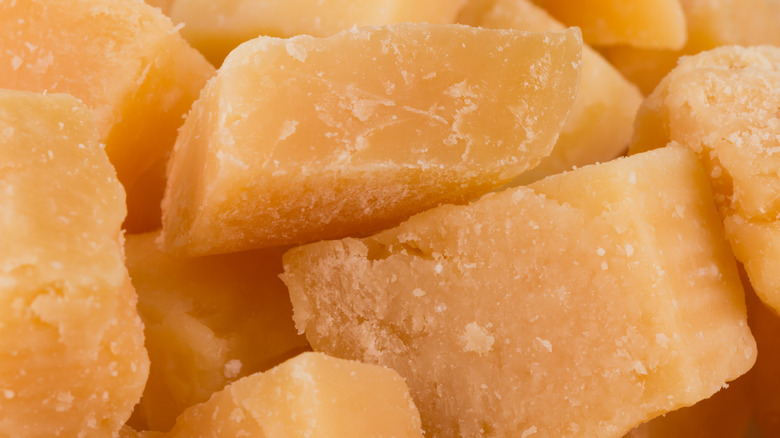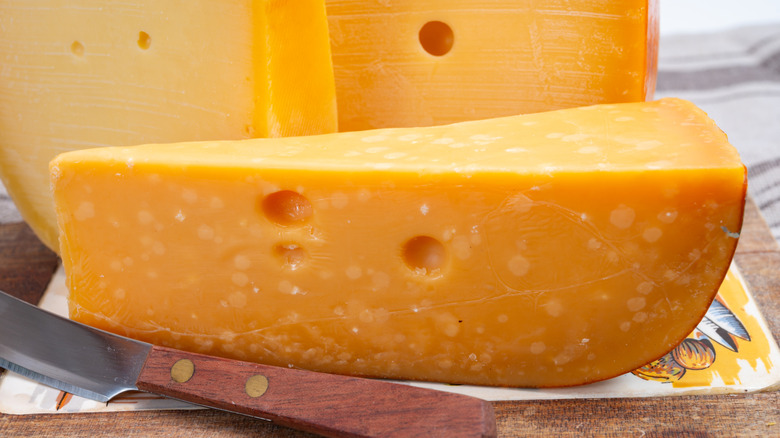What Are The Crunchy Crystals In Hard Cheese And Are They Safe To Eat?
Cheese comes in an astonishing range of textures. Semi-hard gouda is good for mixing and melting, while mild mozzarella is practically meant for pizza. There's creamy burrata, firm Parmigiano Reggiano, and a whole world of stretchy, crumbly, chewy, gooey cheeses in between. If you've ever been puzzled by the crunchy quality of a piece of pecorino, that might be because certain hard cheeses are mottled with a series of curious crystals that contribute to their unique texture. That's right, if you didn't think cheese was already magical enough, it turns out certain varieties contain crystals. That crystalline substance is either calcium lactate or tyrosine.
Like a fine wine and that vintage television series you can't seem to quit, some cheeses get even better with time. Cheese crystals begin to pop up during the aging process. While these spots are sometimes confused with mold, cheese crystals are perfectly safe to eat. They enhance the texture and indicate that the cheese is flavorful and has been properly aged.
Cheese crystals rock
During the cheese-making process, fats and proteins come together to create curds. As some cheeses age, these proteins separate, creating the crystals you see when you bite into a hunk of aged cheddar.
Calcium lactate shows up both on the surface and on the inside of a cheese. It appears as soft, pale spots marking your cheese. You'll likely notice groups of calcium lactate in cheddar and Colby. Tyrosine, on the other hand, will only appear on the inside of your cheese. These bright white specks show up in Swiss cheese, Pecorino Romano, and gruyère. The two kinds of crystals can also appear together in some cheeses. You'll find calcium lactate and tyrosine hanging out together in parmesan or aged gouda.
If you're worried those little flecks of texture dotting the outside of your cheese might be mold, never fear. Calcium lactate will look smooth on the surface of your cheese, while mold is soft and raised. You can carefully remove the moldy bits and still enjoy your hard cheese, and don't hesitate to consume all the sparkly cheese crystals you want.

